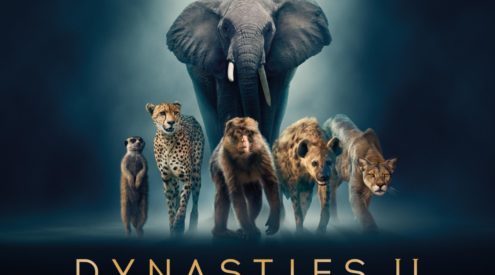As we all know, the lion is the only truly social cat of the larger felid species. Research upon wild prides has suggested the reason as to why the modern day lion has evolved to become a social mammal is down to territory. Nearly all large felids will hold a territory during a certain period of their life time and this area will contain all the natural resources it needs to survive and thrive. However, holding onto a territory and its resources can be tricky. What if your neighbour, who might be bigger and stronger, decides they prefer your territory to theirs? Do you stand your ground and fight risking injury and even death, or do you run with your tail between your legs and hope to find another territory elsewhere?
It would appear the modern day lions’ ancestors were faced with such a dilemma. Over time those lions that fought alone and roamed alone did not survive, but those that began to team up did. The complexities of behavioural evolution and the effects of environmental pressures eventually led to the formation of prides. Those lions that defended a territory together were far more likely to retain that territory and consequently the resources contained within it. Those lions that are unable to claim a territory and defend it successfully are less likely to survive and breed successfully, so having a chum really does count!
The most common territorial behaviour lions exhibit is of course, roaring. This unique and infamous vocalization advertises a pride’s territory and warns others to stay away. Further research upon wild prides has shed further light upon the complexity of roaring in a pride. It would appear the lionesses of a pride are able to count the number of intruders they may hear roaring. By doing so they are able to assess the probability of winning a conflict should one arise. A playback study was conducted upon two wild populations using the recordings of other lions roaring and their reactions were noted. Those smaller prides hearing the roars of larger prides did not respond, or fled, from the direction of the vocalization. Those within larger prides hearing intruders of smaller groups would approach the “intruders” and/or roar in response. Interesting stuff!
Here in the Ngamo lion release site ( housing a pride of released captive origin lions and their cubs borne post-release) the lions are living a fairly easy-going life, not having to worry about intruders threatening their territory. We often hear the pride roaring in response to other lions at Antelope Park but this appears to be more a habituated response than truly territorial. It seems the Ngamo lions may even consider those other lions at Antelope Park as distant pride members within their territory.
It is a vital component of cub development that they begin to understand the importance of territorial defense. Female cubs will begin to actively partake in territorial defense from just 8 months of age alongside their mothers and aunts. The cubs born in Ngamo will not encounter other lions until Stage 4 of the release program perhaps, but it is crucial they are aware of what it means to protect your home!
It was decided then that our research team should begin to carry out a playback study as conducted upon wild prides. Using 18,000 W speakers, a DC to AC converter, a battery and a solar panel we set out to pilot test our study. With the research vehicle within the release site and in sight of the pride (that was sleeping), a second vehicle was parked outside the site, behind a thicket, c. 200m from the fence line. The sun began to sink and the air began to lift; perfect roaring conditions. However light was fading and rigging up the speakers was taking some time. By Murphy’s Law the pride began to move off out of sight before the playback could be started and we daren’t follow for fear of the research vehicle muffling the playback. We had no choice by the time Milo (the pride male) disappeared along Route 66 and we began to slowly follow. Fortunately just then the speakers were switched on and the first play back (of 1 male and 4 females) was played. The playback started out rather softly and neither our researcher, PhD student nor volunteers could hear the roars…but the lions did.
As the roaring from the speakers increased more pride member’s ears twitched and all began to turn back. Suddenly Milo shot like a raging bull towards the sound of these foolish intruders. He bellowed with all his might in response and vanished into the mopane woodland. The females began to follow quickly, though not roaring, with AT1 (the oldest cub) taking a central position amongst the group. Narnia lagged behind as Kenge called to the four younger cubs and began to lead them off elsewhere, to safety. A second playback was sounded sending Milo into a further territorial spin before we sent the speakers back to camp. We observed Milo pacing the area from which the roaring was heard and frequently roaring to warn those unknown lions: ‘dare thee not enter!’
This result was more than what we ever hoped to observe. The Ngamo pride, despite having never encountered wild lions, reacted exactly as any wild pride would; Milo running to the prides’ defense, the females following in pursuit, the oldest cub partaking in defense and the mothers leading the younger cubs to safety. Should there ever be real intruders in the Ngamo pride’s territory they may find themselves wishing they had kept quiet!
It was a breath-takingly beautiful dawn on the 18th April as our research team entered the release site. The clouds of Gweru had nestled themselves between the contours of Ngamo and blanketed the dew covered grass of Serengeti East. As we paused to take in this magnificent scene around us a billow of white smoke rose in the distance. It appeared Milo was also mesmorised by his dream-like surroundings, standing regal and proud over his pride lands, his breath dissolving into the mist. We approached him to find the rest of the pride grumbling amongst one another whilst tucking into a fresh zebra kill. As usual Phyre (the dominant female) had already had her fill by this point and decided to have a roll around with some filthy cubs. Her playful antics though were not met with open arms but the vicious claws of KE4.
On the 19th the pride slept off their zebra kill from the previous day. Apart from a few farts and burps there really wasn’t much to report and all appeared far too fat to move. On the 20th it appeared the lazy lions ordered a take away to their hangout as all were found in the exact same location feeding upon another zebra kill. By the afternoon any movement was out of the question and all cubs had morphed into footballs unable to even roll to sit up.

















